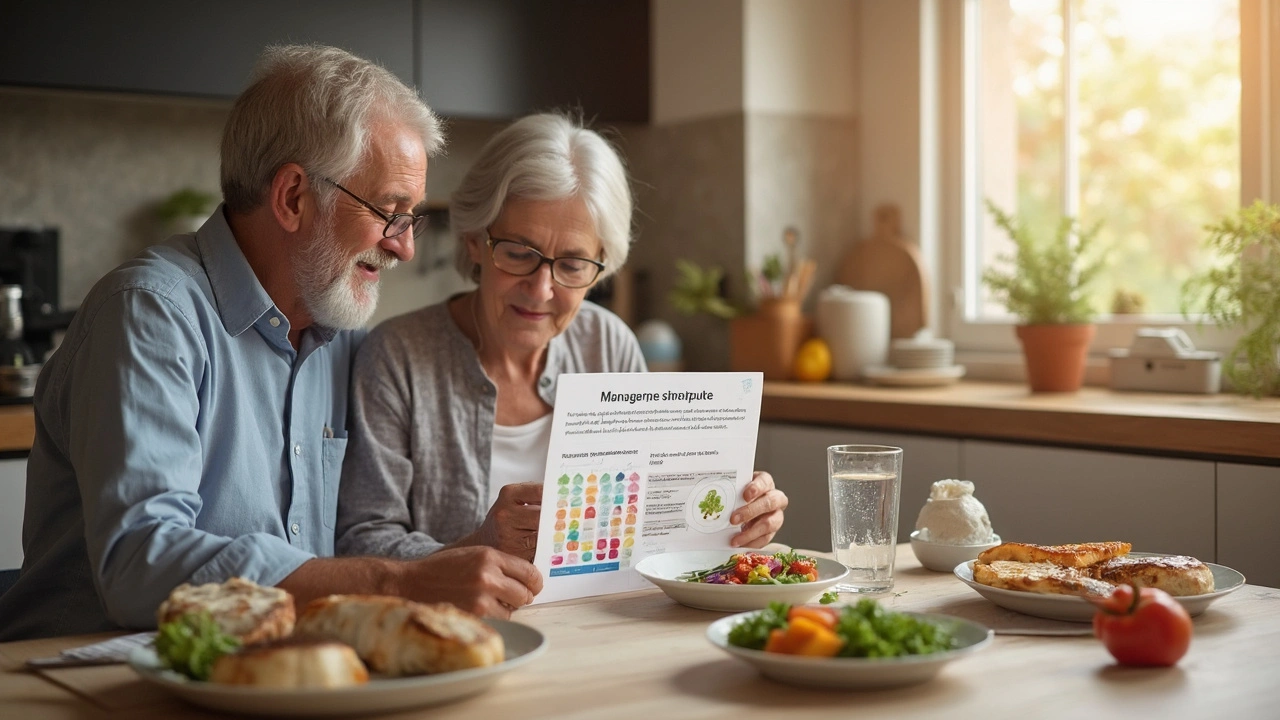PhosLo (calcium acetate): how it works and practical tips
PhosLo (calcium acetate) is a phosphate binder commonly used by people with chronic kidney disease to control high phosphate levels. It works by binding phosphate from food in your gut so your body can’t absorb it. Lowering phosphate helps protect bones and blood vessels when your kidneys aren’t removing minerals properly.
Take PhosLo right with meals. It needs food in your stomach to trap phosphate from the meal. Typical dosing is one to two tablets with each meal but your doctor will set the exact dose based on blood tests. Don’t crush or chew extended-release versions unless the label says so.
Watch for common side effects. Constipation is the most frequent complaint; drinking more water, eating fiber, and mild activity often helps. A less common but important issue is high blood calcium. If you feel confused, weak, or notice muscle cramps, tell your provider—these can signal too much calcium. Your care team will monitor blood calcium and phosphate regularly.
Timing and interactions matter. PhosLo can bind and reduce absorption of other medicines if taken at the same time. Take thyroid pills, antibiotics like quinolones, and certain osteoporosis meds at least two hours before or after PhosLo. If you use vitamin D or calcium supplements, mention this to your doctor because combined calcium can raise blood calcium.
Missed dose? Take it with your next meal. Don’t double the dose to catch up. If you’re about to eat and remember, take the tablet; if you already finished, skip the missed dose and continue as usual.
Traveling or dialysis days need planning. Bring an extra supply, keep tablets in original packaging, and carry a list of your prescriptions. If you’re on dialysis, don’t stop PhosLo without talking to your nephrologist—stopping suddenly can raise phosphate quickly.
What about lab tests? Your doctor will order regular blood checks for phosphate, calcium, and parathyroid hormone. These tests guide dose changes. If phosphate stays high, your provider may raise the dose or switch to a different binder like sevelamer or lanthanum carbonate that doesn’t add calcium.
Safety in pregnancy and breastfeeding is not well-studied. If you’re pregnant, planning pregnancy, or breastfeeding, talk with your doctor about risks and alternatives.
Storage and disposal are simple: keep at room temperature, away from moisture, out of reach of kids. Dispose of unused pills according to local guidelines or pharmacy take-back programs.
Bottom line: PhosLo works well for many people with kidney disease when used exactly as prescribed with meals and monitored by a healthcare team. Ask your nephrologist or pharmacist about interactions, side effects, and whether a non-calcium binder might be better for you.
Quick tips: keep a medication list, remind caregivers about timing, use pill organizers labeled with meals, report any new muscle pain or stomach pain, and ask your lab team about target phosphate and calcium levels. If you change diet—eat fewer dairy and phosphate-rich processed foods and check phosphate content on labels—tell your provider so they can adjust PhosLo accordingly.
Keep questions ready for every clinic visit.
PhosLo: Uses, Side Effects, and Benefits for Kidney Health Explained
Everything you need to know about PhosLo: how it works, who needs it, safety facts, food tips, and real advice for people managing kidney disease or high phosphate.

